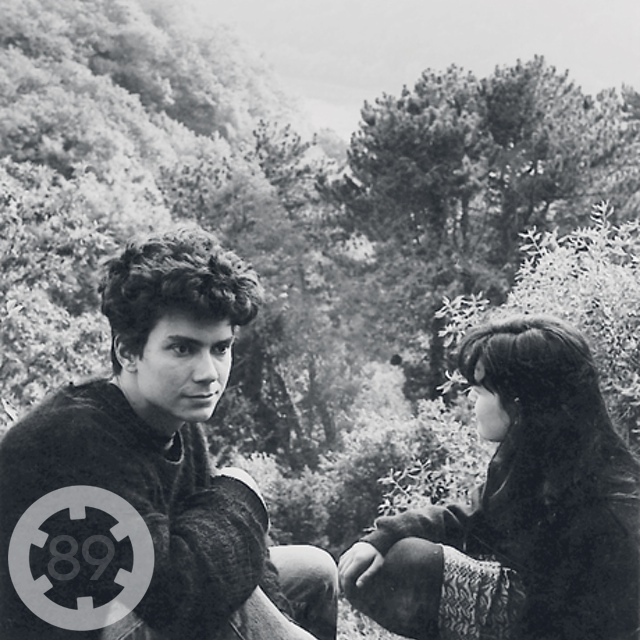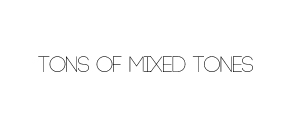The primer of the magesterial and much-missed Flying Saucer Attack - undisputed masters of rural psychedelia. With great story by Jacek Plewicki (“Glissando“).

Jacek Plewicki, “Glissando”
However weird may it sound, sometimes we have to come to the point where we define the most important moments in the history of a genre by pointing out secondary bands and albums or, more precisely, the ones that came just after. This is essential insofar as we’re into inquiring and questioning the foundations of the music of the 90s. Facing the contemporary crisis connected with the issue of retromania, we have to focus on the events that took place just seconds after the revolution and concentrate on artists that were oriented backwards. Artists that consider themselves as being a part of a certain movement just to alienate themselves within it. Those moments had some retro to it, yet were far from any kind of postmodern mania. Not willing to give it a try? Listen to this.
Flying Saucer Attack (FSA) began as a two-piece band consisting of Dave Pearce and his girlfriend, Rachel Brook of Movietone, another band from Bristol. Having a lot in common with precursors of shoegaze, such as My Bloody Valentine and The Jesus and Mary Chain, they somehow managed to reach the outskirts of the genre. It was as late as in 1992 (seven years after Chain’s Psychocandy) when they released their self-titled album, known also by the name rural psychedelia, which has stuck with the band’s image. Hearing the first chords of FSA’s tracks… wait, what have I just said?… hearing all three chords of the FSA’s particular song, it’s not so hard to realize that during these seven years shoegaze has undergone a very significant change. It has outlived Thatcher’s reign and the Second Summer of Love, so, basically, you have no job and you have run out of drugs. Also, you have no money for any other instrument than some cheap Gibson guitar and no will to learn any more chords than “D, G, C, F, E minor, A, A minor and B minor” (to cite Pearce). Then what’s there left? Just try “adding/taking off some of the fingers, getting different variations on the chords”, giving it some distortion pedal and digital echo box and prepare your backpack for the ride into the setting sun. You go further and further and then you realize that you’ve reduced the harshness of The Jesus and Mary Chain and the lyricism of My Bloody Valentine not to a wall of sound so sultry you want to watch Gregg Araki’s Living End, but to a never-ending route leading to melodic progress that actually never happens. Sweet.
Just imagine a conscious choice of letting your music be totally unmoved, sterile, just like Nick Drake’s body. Here, what’s to clap your eyes on is a certain static, an electricity that collects on the surface. This is what FSA’s fans describe as noisenik – a Mozartkugel made of guitar-based distorted vinegar strokes with Drake’s portrait on top of it. As I mentioned, it also goes by the name of rural psychedelia, where rural should refer to pastoral English folk but eventually refers to Bristol – England’s sixth most populous city. Additionally, their first records were published solely on vinyl so that an average peasant could easily put them in his or her brand new Technics. Cutting to the chase, let’s just call it lo-fi or, an even better option, let’s stop pigeonholing and concentrate on the records themselves.
Before Flying Saucer Attack LP, which turned out to be a great success, the band has issued a few 7’’ singles that were oriented in the direction of drum-driven variations (thanks to the involvement of Matt Elliot of The Third Eye Foundation) which functioned as a tool to cut, handle and eventually let loose Pearce’s unedited guitar riffs, growing in accordance with his vocals (see “Standing Stone” and “November Mist” from Distance compilation). As a result, it’s hard to focus on the concrete pitch and lyrics that are blurred because of the feedback and loops as well as of the single-track recording method. However, the things that gained press attention in the beginnings of FSA were the obscurity of their limited edition 7’’ and a noisy cover of The Downers by Suede – their glamrock contemporaries. Not only does this represent FSA’s commercial success, but also shows Pearce’s not-so-serious attitude towards his music – think of Alec Empire’s rendition of Presley’s “Maybellene” and you’ll get something comparably inappropriate.
FSA’s second album Further came out in 1995, marking a worldwide (underground/cult) breakthrough for Pearce and Brook. Reviewed by the Rolling Stone, it is the most accessible of all of FSA’s records – but at the same time quite complicated. Almost every piece, especially “For Silence” and “In the Light of Time”, aims to create an ambiance using effects straight from some cheap easy-listening track, being, however, constructed by a variety of contrasting measures – Eno’s Windows theme mingles with Eno’s treatment of U2’s Joshua Tree and Eno’s Before and After Science and with a few not-so-spontaneous guitar riffs. Or maybe I’m a bit too judgmental.
Anyway, let’s skip to get to his later efforts that try to reformulate the basis of shoegaze by applying a more straightforward singer-songwriter scheme (Mirror) or by refusing to use a simple silent/loud wall of sound doctrine (In search of Spaces, New Lands). Such point of view should point at FSA’s being a driving force behind blurring the borders between ambient, folk and shoegaze – therefore averting the danger of falling into Kevin Shield’s shoe worship. It’s better not to touch anything at any museum, especially if it’s all about gazing.
Starting from the not-so-unique Distant Station, a collection of reworked FSA’s pieces done by the Tele:funken ambient duo, FSA’s records were characterized by frequent use of sampler or drum machine. These were, however, employed not as a rhythmic but as a harmonic counterpoint, which means that they were added as another layer to droning guitar sounds. It’s especially evident in songs from New Lands (check “Present” or “Up in Her Eyes”) which are very fine examples of changes that were introduced into shoegaze by FSA. No longer do musicians focus on the droning of the preexisting drone, it has become possible now to reach out and work on the song structure itself. Pearce (Brook left just soon after band’s formation) seems to simultaneously invoke the echoes of Syd Barrett and Jackson C. Frank, Roy Harper and The Dickies, not to mention the pioneering St. John le Baptiste de la Salle.
There is also some teenage Angst to it, exposed in In search of spaces published on the legendary Corpus Hermeticum label from New Zealand. What we have here is a mixtape made out of a few live tape recordings from 1994 but it sounds more like a high-brow version of a new Acid Mothers Temple album. Based on the frequency transposition and a constant dialogue between various drones, riffs and drugs involved in making of this record, it clearly shows how FSA’s music evolved from the classical structure of a shoegaze track towards a new kind of experimental freak-out. For sure, shoegaze spirits are still present in the room, but it’s not much of a muchness.
Mirror (the last actual FSA’s solo effort) is a work aimed at overlapping of two totally separate fields. Guitars distinctly separated from drones (namely “Space 1999”), playing around with vocals on and off-key (“Dark Wind”) – all of this shows Pearce’s will to find his kind of music at the intersection between ballad, shoegaze and space rock. But you can clearly see that it’s just a build-up when you reach “Chemicals” – a track that is an avid negation of the previous songs. Pulsing beat, Reznor-esque vocals… suddenly it no longer is a gentle cocktail for a Sunday evening and becomes cumbersome, or even vulgar. What’s more, Mirror is summed up by the breakbeat of “Rise” and pulsing noise of “Starcity”, leaving you with no sound to lie on your deckchair to.
Wrapping it up, it’s interesting to consider FSA as one of the bands that, solely through continuous exploration of the genre it came from, developed a quite unique musical language. Adding another layer of guitar feedback, drum loops, some live congas, recording everything on a single channel, then making it on a multi-track tape – FSA made the most out of each of this solutions. Each of Pearce’s records shows how interesting a single technical or conceptual alteration can be.
http://www.faqs.org/faqs/music/flying-saucer-faq/
Download the mixtape (right click > save as)
PLAYLIST:
- Rainstorm Blues (“Further” Drag City, 1995)
- Oceans (“Distance” VHF Records, 1994)
- Make Me Dream (“Flying Saucer Attack” VHF Records, 1993)
- Distance (“Distance” VHF Records, 1994)
- Come And Close My Eyes (“Further” Drag City, 1995)
- Land Beyond The Sun (“Land Beyond the Sun / Everywhere was Everything 7″” Drag City, 1994)
- Whole Day Song (“New Lands” Domino, 1997)
- Dark Wind (“Mirror” Drag City, 2000)
- Popol Vuh 1 (“Flying Saucer Attack” VHF Records, 1993)
- Wintersong (“Mirror” Drag City, 2000)






